Last updated: September 20, 2021
Article
Brown Bear Resource Brief for the Arctic Network
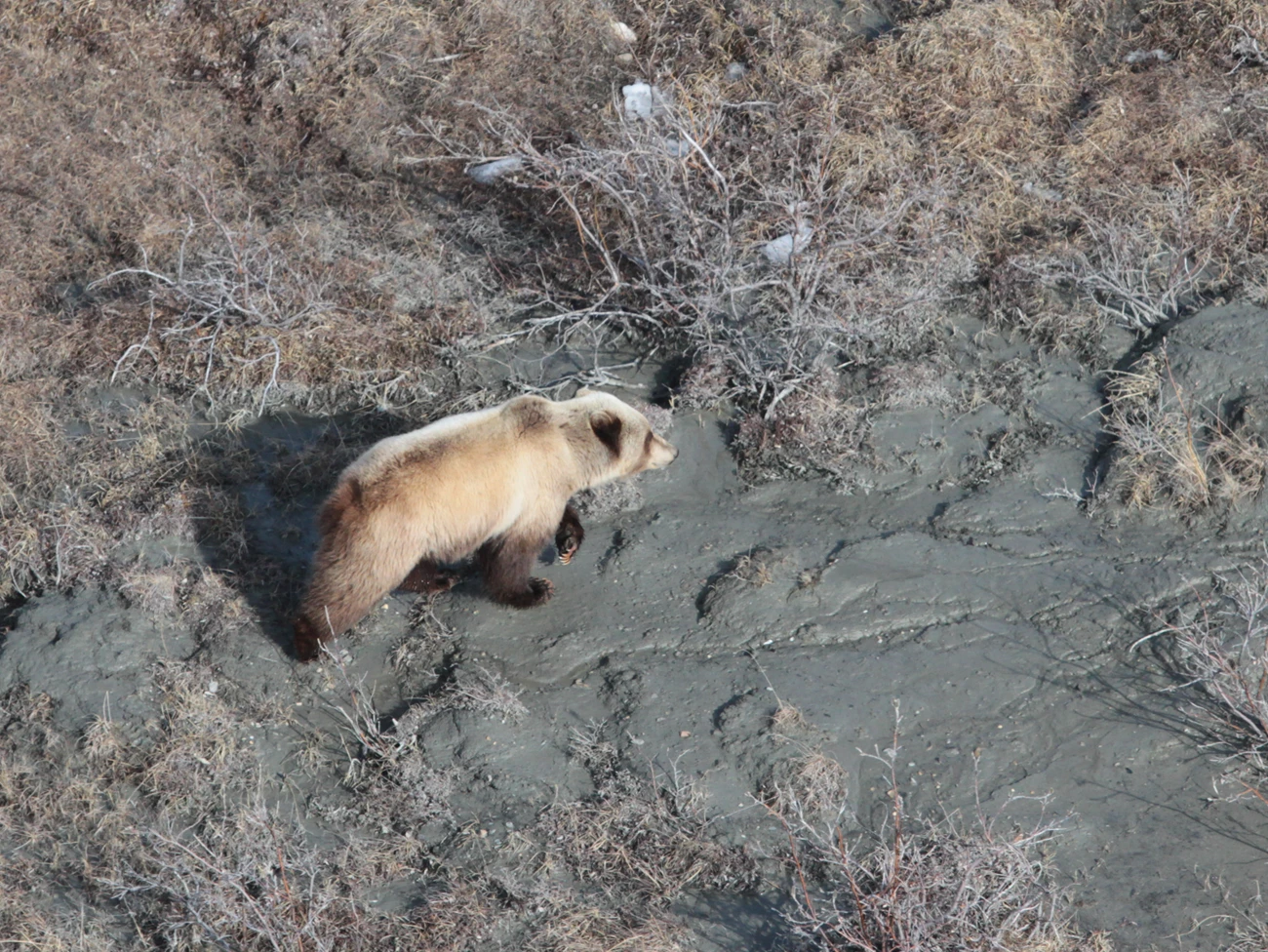
NPS/Dylan Schertz
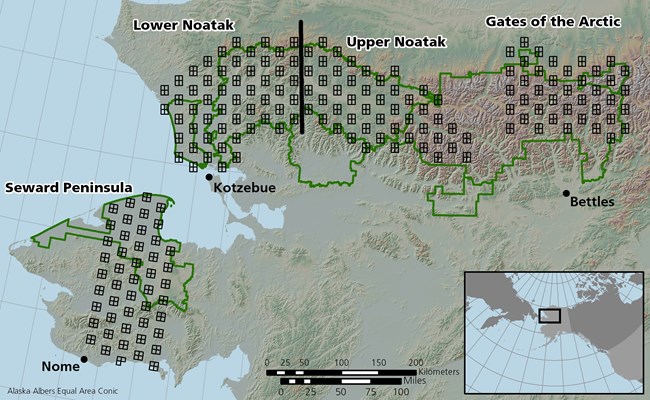
Status and trends of brown bears in the Arctic Network
Overall, brown bear populations are stable in the Seward Peninsula Survey Area, which includes Bering Land Bridge National Preserve, and the Lower Noatak Survey Area, which includes Cape Krusenstern National Monument and the western portion of Noatak National Preserve. Aerial survey results from the Upper Noatak indicate an increase in bear density since 2005. In contrast, there is some evidence of a decline in bear densities in the Gates of the Arctic National Park and Preserve Survey Area. In all survey areas, there are only two or three estimates of density. Since 2005, we have used two survey methods to track changes in bear abundance and density. We used the current method in four surveys from 2015-2021, and we used a similar method in 5 surveys from 2005-2010 (details in Schmidt et al. 2021). Additional surveys will be conducted to gain more information about population trends and refine the survey methods.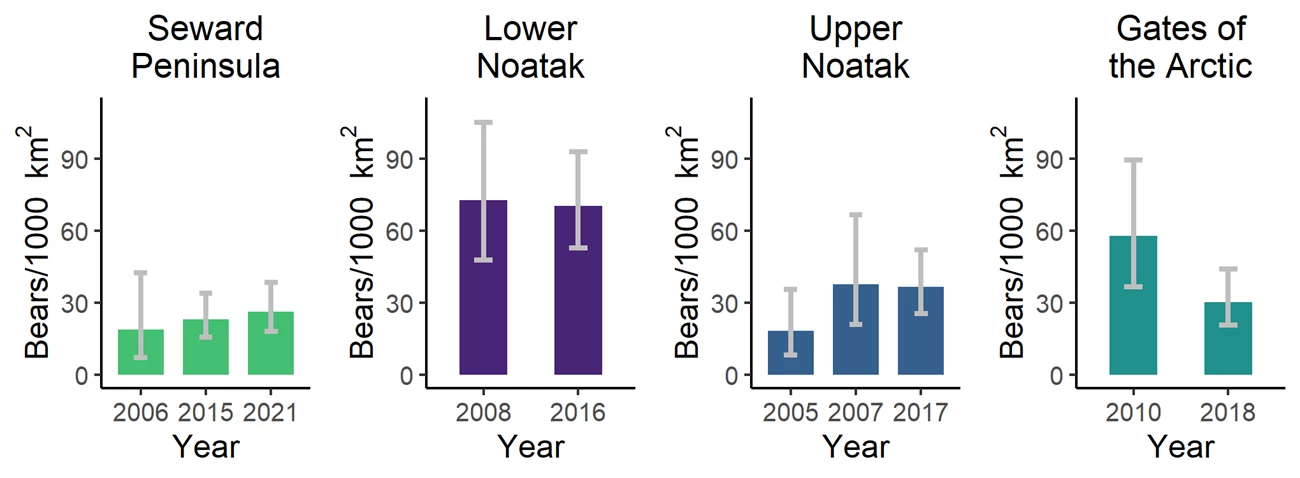
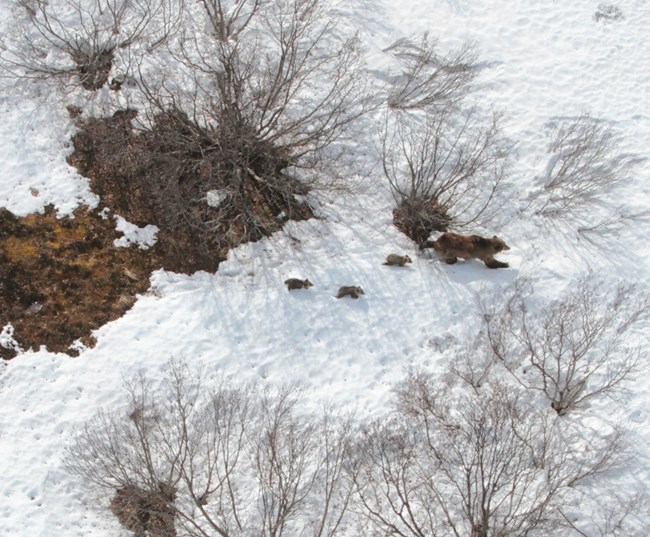
NPS/Dylan Schertz
Why brown bears are important
The brown bear is an iconic species of Alaska’s national parks, and its presence symbolizes the wilderness character of these vast landscapes. Alaska has more than 50% of the remaining North American brown bears and the second largest population worldwide. In spite of the vast habitat protection provided by Alaska’s national parks and regulated harvest, the vulnerability of brown bear populations to human-caused disturbance is high and their resilience to disturbance is minimal. This sensitivity makes them good indicators of ecosystem integrity; a declining bear population can be an early indicator of landscape-level changes. Increasing demands for oil, gas, coal, and minerals along with accompanying industrial development on adjacent lands may pose a threat to brown bear populations through habitat fragmentation and human-caused mortality. Parks in the Arctic Inventory and Monitoring Network (ARCN) may ultimately provide a refuge for brown bears in northwest Alaska that are adapted to life in the Arctic, but strong monitoring programs are needed to understand whether these bear populations can remain healthy in a rapidly changing Arctic.

NPS/Dylan Schertz
How we monitor
brown bears
The ARCN brown bear monitoring program surveys four study areas, on a rotating schedule—each area is sampled once every five years during late May and early June. Our biologists use a novel technique to estimate the number and distribution of bears living in ARCN parks. The method, called “photo mark-resight”, requires two teams, each consisting of an aircraft pilot and observer, to search for bears in a survey unit. After each team surveys a unit, they swap and re-survey the other team’s unit. When they see a bear or bear group, they take pictures and record a location. At the end of the day, the biologists use the photos and locations to determine which bear groups were seen by both survey teams. We do not see 100% of the bears present during a survey, but re-sampling units enables us to estimate the number of undetected bears in an area. To compare among survey areas of different sizes, the abundance estimates are converted to bear density estimates (Schmidt et al. 2021).

What we want to know
about brown bears
-
Long-term trends in bear abundance and density within 5 park units
-
Long-term trends in bear occupancy in each survey area
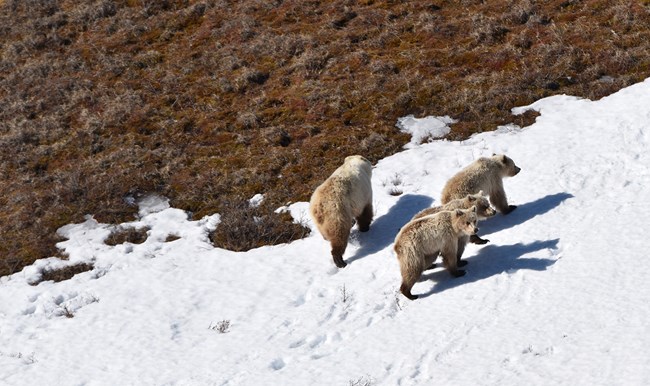
NPS/Jordan Pruszenski
How monitoring brown bears can help park managers
Brown bear abundance and density estimates are critical for managing brown bear populations and their harvest. Managers use these metrics to inform conservation of populations of brown bears within parks and to manage human-caused mortality of brown bears while providing reasonable opportunities for hunting and non-consumptive activities. In addition, these data will provide baseline information to mitigate the effects of human development on brown bear populations within and adjacent to parks.For more information, contact:
William Deacy, ARCN Biologist
4175 Geist Road, Fairbanks, Alaska 99709
(907) 455-0684
William_deacy@nps.gov
